Interview with Hung Liu on art-rated.com

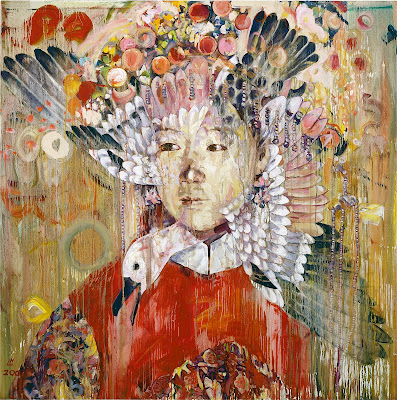



Earlier this spring I took a trip with my daughter Isabelle and our friend Matt Arnett to visit Thornton Dial’s exhibition at the High Museum in Atlanta and see his studio in Alabama. Dial’s incredible works were showcased in the exhibition Hard Truths/ The Art of Thornton Dial.The exhibition, which originated at the Indianapolis Museum of Art surveys twenty years of Dial’s paintings, sculptures, and drawings. The work emphasizes the strength and compassion that Dial brings to each idea. The survey brings up the difficult question of why Dial’s work has not been given the respect and notoriety it is due until now. Race, education, and class have all played a factor in the denial of Dial’s admission into the contemporary art canon. The exhibition is a resplendent manifestation of a powerful discourse on the human condition from a vantage point rarely celebrated.

A few miles beyond Birmingham in Bessemer, not far from the highway, a row of warehouses line a sleepy street. Deep within the sprawling space of one of these warehouses, a corner has been turned into a large windowless room where Thornton Dial creates his work.
The warehouse, built by Dial’s sons, is the home of their steel patio furniture business, Dial Metal Patterns. What was once a thriving industry has now slowed, devastated by the steep and prolonged rise of steel prices. Dial and his sons have worked in the metal industry most of their lives. Machines for bending, cutting, and painting , once used in the production of patio furniture now slumber. Dial’s sons Richard and Donnie explained to me during my visit that not only had they built one of the metal bending machines after seeing one in another metal shop, but they had also constructed the entire warehouse itself, having had noexperience with constructing large buildings. Creativity and ingenuity run in the Dial family.
Thornton Dial was born in 1923 in Emelle, Alabama, a tiny town that has all but disappeared. As a very young child he had many responsibilities caring for farm animals and working the fields. He watched as his uncle built sheds, barns, and small buildings. These structures, many built nearby by relatives and neighbors were designed carefully, composed from a wide range of materials colors, textures, and architectural styles intended to increase their visibility and to stylistically distinguish their makers. Assemblages made from recycled materials and found objects dotted the landscape. Communities created dialogues with yard art now recognized as part of the southern African American vernacular artistic tradition. Dial absorbed this complex vocabulary and incorporated it into his own work.
Through making things Dial expresses his understanding of the world around him. Dial’s painting and sculptures are narratives that discuss the complexities of his own life, nature,politics, race and history, constructed of found materials both natural and handmade. Many of his assemblages have included bones, wire, dirt, flowers, clothing, utilizing reused and recycled materials, wood, wire, plastic, and metal scraps. Surviving struggle and hardship Dial remains optimistic and the beauty of the natural world winds its way through his compositions.

The discipline of yard art is evident as you travel throughout Alabama. Like Dial, Birmingham resident and Dial’s friend Joe Minter grew into the practice of making things to express his ideas. Isabelle, Matt, and I paid an impromptu visit to Minter’s yard to view the extensive environment he has created over the years. Minter’s house sits atop a hill abutting the local black cemetery, which serves as a thought-provoking backdrop to his visual, highly political commentary. The enormous yard is home to a maze of interconnecting installations that touch on topics such as slavery, voter’s rights, the Gees Bend Ferry, the World Trade Center bombing, and religion. The dullness of the rainy spring day was diminished by our eagerness to see what was around the next corner as we walked through the yard over wooden pathways and bridges surrounded by a forest of rusting metal decorated with thousands of words and bright plastic ephemera. Minter is constantly amending the ever-changing environment. He recently added a piece in response to the Sandy Hook shooting.
As we made our way to Dial’s studio we drove by his former home, a neat brick one-storybuilding that he built. The sidewalk to the house is lined with cement filled soda cans, actingas bricks, attesting to the fact that Dial’s innovative use of recycled materials is not only a trait of his artwork, but also a characteristic of his everyday life. Behind the house is a small garage where Dial created his work for many years, unbeknownst to anyone but his family. Dial has always made things, but didn’t think of himself as an artist. Until a few years ago, Dial worked alone creating and moving large paintings and sculptures in the garage behind his house. After he had a stroke in 2009, his sons created the new studio for him within the warehouse, and they began helping him move the heavy assemblages. Inside Dial’s new studio, piles of scrap metal, wood, plastic flowers, paint cans, and old clothes populate almost every conceivable space. Paintings in progress either hang neatly on the walls, or sit atop sawhorses, so he can attach materials such as charred wooden boards and cloth. From the surrounding sea of materials, glorious works of art arise.

Last September Hung Liu returned to Paulson Bott Press for her fifth project. All of us at the press look forward to her enthusiasm and her wide-ranging humor. The first time I worked with Hung Liu in 2008, I expected her to be stoic and severe, given the heavy content of her work. However, I was surprised and pleased to discover that despite her seriousness, she carries herself with an almost child-like cheerfulness and curiosity. There is a good deal of laughter when Hung is in the studio. She also brings a considerable amount of technical knowledge and confidence to the production of her prints. Intaglio can be a daunting and opaque medium for many artists, but she never seems intimidated by its esoteric challenges and unpredictability. For this project we focused on two large portraits and three small cartoon images based on her Happy & Gay series of paintings.

The Happy & Gay images are based around a series of Chinese Dick and Jane-like cartoons for children. The title comes from a song/school exercise for learning English: “Come boys and girls—let’s sing let’s dance. We are happy and gay. It’s our National Day.” The seemingly benign and bucolic images are both familiar and strange. Like their American counterparts, they’re intended to teach a set of wholesome, normative values such as hard work and pragmatism, with a heavy emphasis on the nuclear family and nationalism. Consequently, the fact that these doppelgangers are in the service of the Maoist Cultural Revolution, the loyal opposition of American exceptionalism, makes them feel, dare I say, queer. Such a contrast brings into focus the puritanical undercurrent in both. Hung goes on to further push these tensions with soft subversions such as the pink clothing, which also evokes the double entendre of the title. Such flamboyance would be contextually deviant even in their American equivalents. The images and phrases of her youth are resurrected, with an irony and an acknowledgement that they no longer embody the meaning they once did.

A former painting teacher of mine once shared a story about a classmate who got in trouble and was ultimately expelled from their academy in the Soviet Union for making an impressionist painting. There was no dissident political content, or satire, just a few fauvist trees, which in an American school would have been at worst derided as quaint or anachronistic. Yet the implied individuality and emphasis on interpretation of feeling were perceived as threatening and subversive to the rigid social order. So in recreating these images in her own hand, and with small expressionistic flares, Hung is slyly breaking the rules that fettered the illustrators and artists forced to work in a state-approved style. In her version, the subjects seem to be tripping the Great Leap Forward.
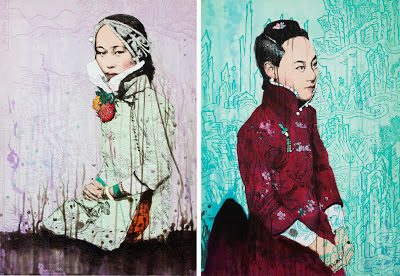
The two portraits are part of an ongoing series of works that are based on early 20th-century photographs of prostitutes. Many of the photographs are small and lack clarity and contrast, yet she is able to enhance the amount of information while imbuing them with a greater sense of life and naturalism. In addition to bringing her large collection of portraits, Hung also brought in an enviable collection of books filled with small reproductions of Chinese woodcuts, which she used to create the backgrounds of Shan-Mountain and Shui-Water. Both prints started with a softground drawing of the figure that was then built up with many layers of aquatint, drypoint, reductive plate work, and, most notably, spitbite, in which nitric acid is painted onto the plate and allowed to drip and run, echoing the turpentine streaks of her paintings. Similar to the way Hung mixes humor and seriousness, these images balance crude or visceral elements with elegance. The softground has a rough, heavy and weathered quality in the way the lines and shapes are broken up by optical chatter, yet the draftsmanship is masterful and sensitive. The spitbite drips can feel both chaotic and ominous, as if the women were melting wax figures yet the drips in and of themselves are lyrical and painted with an unfussy playfulness. These contrasting elements lend a fitting uneasiness to their beauty. While the women are poised and graceful, the images belie the grim and misogynistic reality of their original purpose.
Hung Liu’s work is never what you think it might be at first glance.
To read the interview click here.
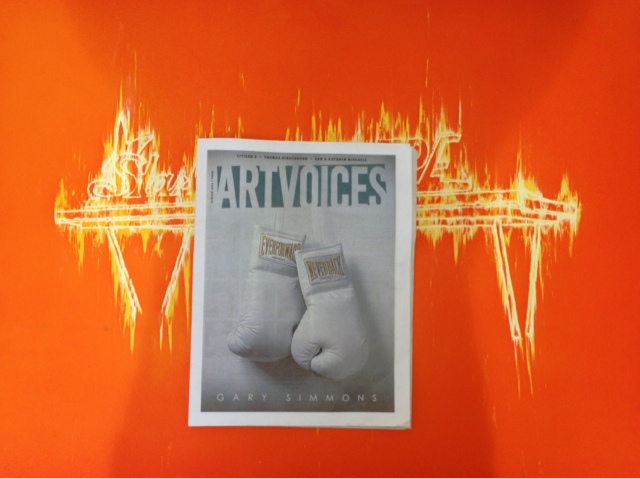
Getting to New York this year for the print fair was no easy task. As you can imagine, Super Storm Sandy created mass confusion and a logistics nightmare. After many hours spent analyzing our chances of getting there we finally rearranged our cancelled flight and boarded a plane to arrive in New York Wednesday afternoon, only a day and a half later than planned. We caught a cab straight to the Uptown Armory, suitcases in tow, anxious to see if our crates full of artwork had been delivered. Miraculously they had, and we were able to begin intsalling our booth immediately. Thanks to the tireless work of Michele Senecal (IFPDA), Sanford Smith Associates, and the construction crews (who began building the booths midnight Tuesday and worked 18 hours straight) the walls for the fair were ready. Not everyone was so lucky. Some art never arrived.

Uptown was in a kind of bubble, everything seemed almost OK, except that Central Park was closed and you couldn’t get anywhere by subway. But what really stood out was the shock on everybody’s face, the dazed look that us West Coasters recognize from the days following the Loma Prieta earthquake. As the magnitude of destruction unfolded, we heard stories from our collegues about the damage to homes, galleries, artwork, and worst of all, the loss of human life. The Upper West Side had power and felt surreal in its near normalcy and we were lucky to be staying there. Like everyone in New York who could, we offered one of our rooms to someone who was unable to commute to the fair from Brooklyn.

The show opened a day late, the attendance was at half capacity (amazing considering the circumstances). Those who did make it were the diehards, supportive, and elated to be there at all. The fair looked especially good with the glow of survival. We exhibited our latest pieces by Thornton Dial, Isca Greenfield-Sanders, Gary Simmons, and Martin Puryear. For us the fair was extra special because it was a symbol of the city’s endurance and ability to overcome adversity.
A few highlights from the fair:
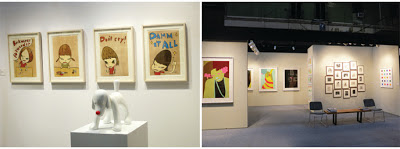
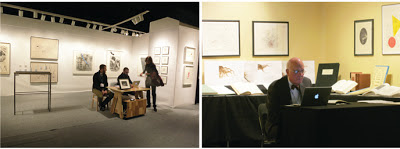
We send our best wishes to everyone recovering from the storm and are thankful for the bravery and camaraderie of the people on the East Coast.